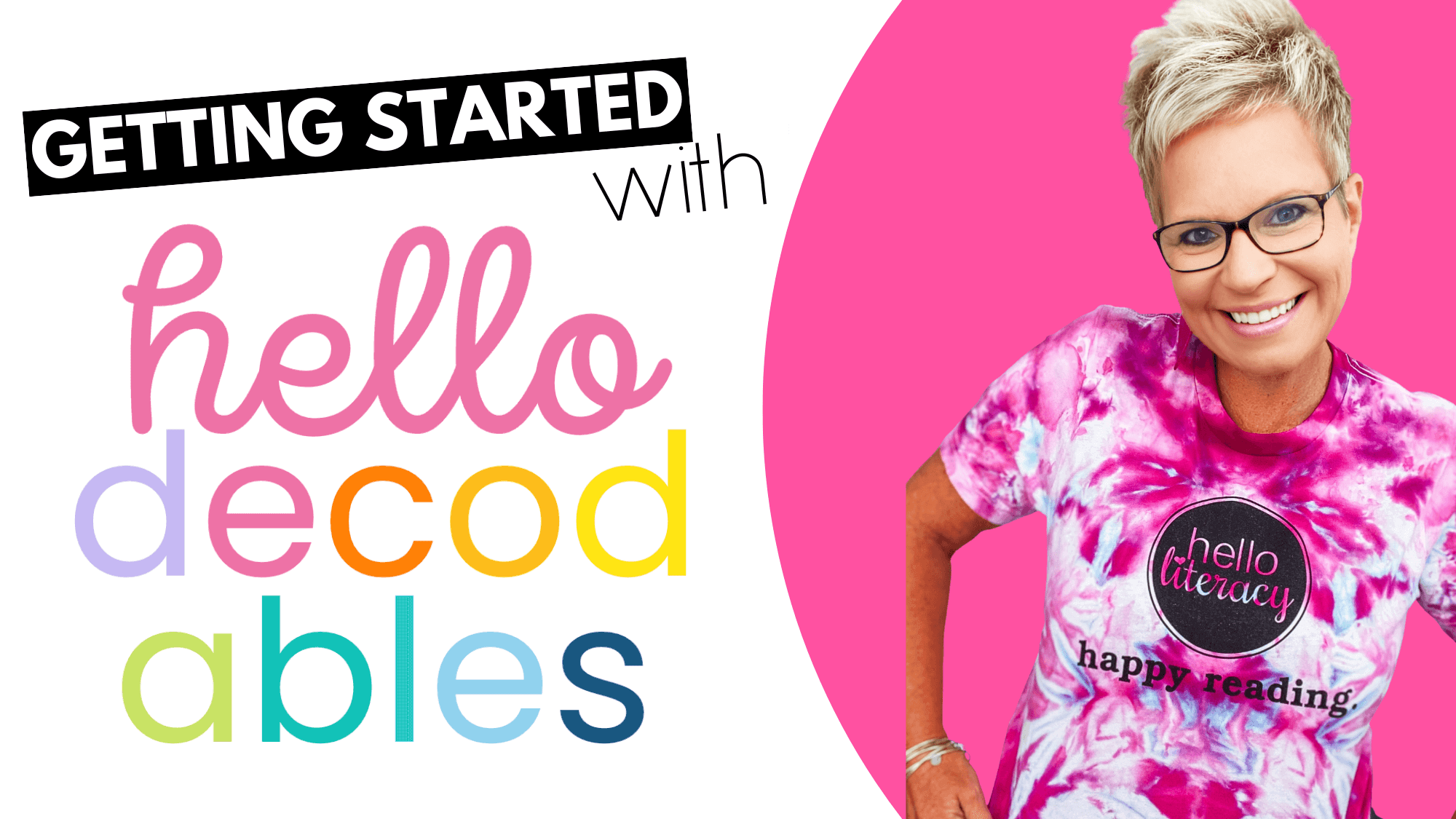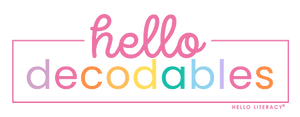
· By Jen Jones
Boost Reading Skills with Free Kindergarten Decodable Passages
The Importance of Decodable Passages for Young Readers
If you’re looking for free decodable passages for kindergarten, you’re in the right place. Decodable passages are essential tools in building strong reading skills in early learners.
Why use decodable passages?
- Phonics-based learning: Decodable passages follow a systematic phonics scope and sequence, helping children apply learned phonics skills in real reading contexts.
- Early reading skills: They provide practice with short vowel CVC (consonant-vowel-consonant) words and other fundamental phonics patterns.
- Engagement and comprehension: By seeing words they’ve learned to decode, children gain confidence and improve both fluency and comprehension.
As early learners begin their reading journey, using structured and phonics-based materials like decodable passages ensures they build a reliable foundation. This approach aligns with the Science of Reading principles, emphasizing the connection between phonics instruction and fluent reading.
I’m Jen Jones, founder of Hello Decodables and a longtime educator with over 30 years in literacy education. My expertise lies in creating engaging, effective resources for early readers. With research-backed techniques, I’ve helped countless young learners thrive.
What Are Decodable Passages?
Decodable passages are short texts that are designed to help children practice their phonics skills. These passages use phonics concepts that students have already learned, ensuring they can decode (or sound out) the words.
The idea behind decodable passages is simple but powerful: give kids text that they can read using the phonics rules they know. This builds their confidence and reinforces their learning.
Phonics Concepts and Controlled Texts
Decodable passages are controlled texts. This means every word is chosen carefully to match the phonics skills the child has been taught. For example, if a child has learned the short "a" sound, the passage will include words like "cat," "bat," and "hat."
By focusing on specific phonics concepts, these passages help children apply what they've learned in a meaningful way. They see the same phonics patterns repeatedly, which helps them become more fluent readers.
Science of Reading
The Science of Reading supports the use of decodable passages. According to research, learning to read is not just about recognizing words by sight. It's about understanding the relationship between letters and sounds—phonics.

Using decodable passages helps children make these connections. They practice decoding words, which improves their reading accuracy and fluency. Over time, this leads to better comprehension and a larger sight vocabulary.
In summary, decodable passages are a key tool for early reading instruction. They help children practice phonics skills in a structured way, building a strong foundation for future reading success.
Next, let's explore some free decodable passages for kindergarten that you can use in your classroom.
Benefits of Using Decodable Passages for Kindergarten
Decodable passages offer numerous benefits for young readers, especially those in kindergarten. These passages are designed to help children practice their phonics skills in a structured and systematic way. Let's explore the key benefits:
Phoneme-Grapheme Connections
Decodable passages strengthen the connection between phonemes (sounds) and graphemes (letters). This is crucial for developing strong reading skills.
Example: If students have learned the "sh" digraph, the passage will include words like "ship," "shell," and "fish." This repeated exposure helps solidify the phoneme-grapheme connections.
Reading Fluency
Repeated practice with decodable texts improves reading fluency. Fluency is the ability to read smoothly and accurately.
Fact: According to H. Mesmer's study, first graders who used decodable texts applied letter/sound knowledge more consistently and read more accurately. This means they needed less help from their teacher.
Comprehension Skills
While the primary focus is on decoding, decodable passages also help build comprehension skills. Students discuss the text and answer questions, which deepens their understanding.
Quote: "Using these passages and lesson plans, students will reread the decodable text to build fluency, discuss the text to build comprehension skills, and write about the passage to apply and transfer their phonics skills to their writing."
Systematic Approach
Decodable passages follow a systematic approach, aligning with a structured phonics scope and sequence. This ensures that higher-level concepts are introduced only after simpler skills are mastered.
Example: A systematic approach might start with short vowel sounds and progress to more complex concepts like digraphs and blends. This helps students build on their knowledge incrementally, making learning more effective.
By incorporating decodable passages into your kindergarten curriculum, you can significantly boost your students' reading skills. They not only practice decoding but also gain confidence, improve fluency, and improve comprehension—all in a structured, research-backed way.
Finding high-quality, free decodable passages for kindergarten can be a game-changer for both teachers and students. Here are some excellent resources to get you started:
Hello Decodables
Hello Decodables offers a treasure trove of decodable readers. Available as downloadable PDFs or PowerPoint versions, these resources come with reading tips and notes for teachers. This makes them incredibly user-friendly and adaptable to different teaching environments.
Why We Love It:
- Comprehensive Formats: Special versions for iPads or tablets.
- Multiple Formats: Use online in HTML or download as PDFs.
- Accompanying Materials: Worksheets and fluency charts for each book.
UFLI Decodable Passages
UFLI Decodable Passages are another fantastic resource. These printable passages come with space for students to illustrate the passage, ensuring comprehension and adding a fun, creative element to reading.
Highlights:
- Printable Passages: Easy to print and distribute.
- Student Illustrations: Helps ensure comprehension and makes reading fun.
Teach My Kid To Read
Teach My Kid To Read offers e-book readers that are perfect for at-home practice. These resources are reliable and easy to share with parents, making them ideal for reinforcing skills outside the classroom.
Benefits:
- E-Book Readers: Easily accessible for parents and students.
- At-Home Practice: Encourages consistent reading practice at home.
Half-Pint Readers
Half-Pint Readers provide digital decodables with fun illustrations and comprehension questions at the end of each book. These are excellent for engaging young readers and assessing their understanding.
Features:
- Digital Decodables: Accessible on various devices.
- Comprehension Questions: Helps assess understanding and retention.
These resources not only offer free decodable passages for kindergarten but also come with additional features that make them easy to integrate into any teaching plan. Whether you're looking for downloadable PDFs, online access, or printable passages, these options have you covered.
Next, let's explore how to effectively use these decodable passages in your classroom.
How to Use Decodable Passages in the Classroom
Incorporating free decodable passages for kindergarten into your classroom can significantly boost your students' reading skills. Here are some effective strategies to make the most out of these resources:
Explicit Lesson Plans
A well-structured lesson plan is key to effective teaching. Decodable passages often come with explicit lesson plans that guide you through the teaching process. These plans typically include:
- Target Phonics Skills: Focus on specific phonics skills that the passage aims to reinforce.
- Step-by-Step Instructions: Detailed steps for introducing, reading, and discussing the passage.
- Activities: Engaging activities that align with the phonics skills being taught.
For example, a lesson plan might start with a brief review of the target phonics skill, followed by reading the passage together, and ending with a discussion and related activities.
Before, During, and After Reading Activities
To maximize the impact of decodable passages, engage students in activities before, during, and after reading.
Before Reading:
- Preview Vocabulary: Introduce any new or challenging words.
- Set a Purpose for Reading: Explain what students should focus on, such as identifying words with the target phonics pattern.
During Reading:
- Guided Reading: Read the passage together, pausing to discuss and decode words.
- Choral Reading: Have students read the passage aloud in unison to build fluency.
After Reading:
- Comprehension Questions: Use questions to check understanding and reinforce the material.
- Extension Activities: Engage students in activities like drawing scenes from the passage or writing short summaries.
Fluency Practice
Repeated reading is a proven method for building reading fluency. Encourage students to read the decodable passages multiple times. Here are some strategies:
- Echo Reading: The teacher reads a sentence or paragraph, and then the students repeat it.
- Partner Reading: Students take turns reading to each other, providing immediate feedback.
- Timed Reading: Students read the passage for a set amount of time, aiming to improve their speed and accuracy with each attempt.
Comprehension Discussions
While the primary focus of decodable passages is on phonics and decoding skills, comprehension should not be overlooked. Here are some ways to incorporate comprehension discussions:
- Discussion Questions: Use open-ended questions to encourage students to think about the passage. For example, "Why do you think the character made that choice?" or "What might happen next?"
- Story Retelling: Have students retell the story in their own words, focusing on key details.
- Connection Making: Encourage students to make connections between the passage and their own experiences or other texts they have read.
By following these strategies, you can effectively use free decodable passages for kindergarten to improve your students' reading skills.
Next, let's address some common questions about using these resources in the classroom.
Frequently Asked Questions about Free Decodable Passages for Kindergarten
What is the difference between decodable and leveled readers?
Decodable readers are designed to support phonics instruction. They use words that align with specific phonics patterns that students have already learned. For example, a decodable reader focusing on the "sh" digraph will include many words with "sh" like "ship" and "fish." This helps students practice decoding by applying their phonics skills.
Leveled readers, on the other hand, are graded by overall difficulty, which takes into account factors like sentence length and word complexity. They are not necessarily aligned with phonics instruction. This means they might include words that students have not yet learned to decode, making them more challenging for early readers.
In summary:
- Decodable Readers: Focus on specific phonics skills. Ideal for early readers.
- Leveled Readers: Graded by overall difficulty. Useful for building vocabulary and comprehension after basic decoding skills are mastered.
How long should students use decodable passages?
The duration for using decodable passages varies from student to student. Generally, they should be used until students can read most regular correspondences accurately and have a sight vocabulary of several thousand words.
Key points:
- Practice Duration: Continue until students can read accurately and fluently.
- Student Progress: Monitor progress to ensure they are internalizing the phonics skills.
- Sight Vocabulary: Aim for a sight vocabulary of several thousand words.
H. Mesmer's study on first graders found that using decodable texts helped students apply letter/sound knowledge more consistently and read more accurately.
Are there free resources available for older students?
Yes, there are free decodable resources custom for older students who still need to master advanced phonics skills. These resources often include more complex texts and comprehension questions to ensure that older students are not only decoding but also understanding what they read.
For older students:
- Advanced Phonics Skills: Resources that focus on more complex phonics patterns.
- Comprehension Questions: To ensure understanding and reinforce learning.
- Engaging Content: Stories and passages that are age-appropriate and interesting.
For example, Teach My Kid To Read offers e-book readers that can be used for at-home practice, while UFLI Decodable Passages provide printable passages that come with illustrations to engage older students.
By understanding these key differences and best practices, you can make informed decisions about incorporating free decodable passages for kindergarten and beyond into your classroom.
Conclusion
At Hello Decodables, we specialize in educational publishing, offering phonics-based decodable books designed to improve reading instruction for children. Our structured, systematic approach is aligned with the Science of Reading research, making it highly effective for building phonics success.
Our decodable passages are more than just simple texts. They are carefully crafted to align with a systematic phonics scope and sequence, ensuring that each passage supports the specific phonics skills students are learning. This structured approach helps students make the crucial connection between what they learn in phonics lessons and what they read, laying a strong foundation for their early reading skills.
Hello Decodables is committed to enhancing phonics success through our comprehensive resources. We provide explicit lesson plans, blending lines, and audio recordings to support teachers in delivering effective phonics instruction. Each passage is accompanied by activities for before, during, and after reading, which helps to strengthen not only phonics skills but also reading fluency and comprehension.
Our resources are designed to be engaging and accessible, ensuring that students can practice decoding in a way that is both enjoyable and educational. With Hello Decodables, teachers have a reliable partner in fostering a love for reading and building strong foundational skills in their students.
For more information and to explore our full range of decodable books, visit our Hello Decodables service page.

By choosing our structured, systematic resources, you are taking a significant step toward improving your students' reading skills and setting them on a path to lifelong literacy.
